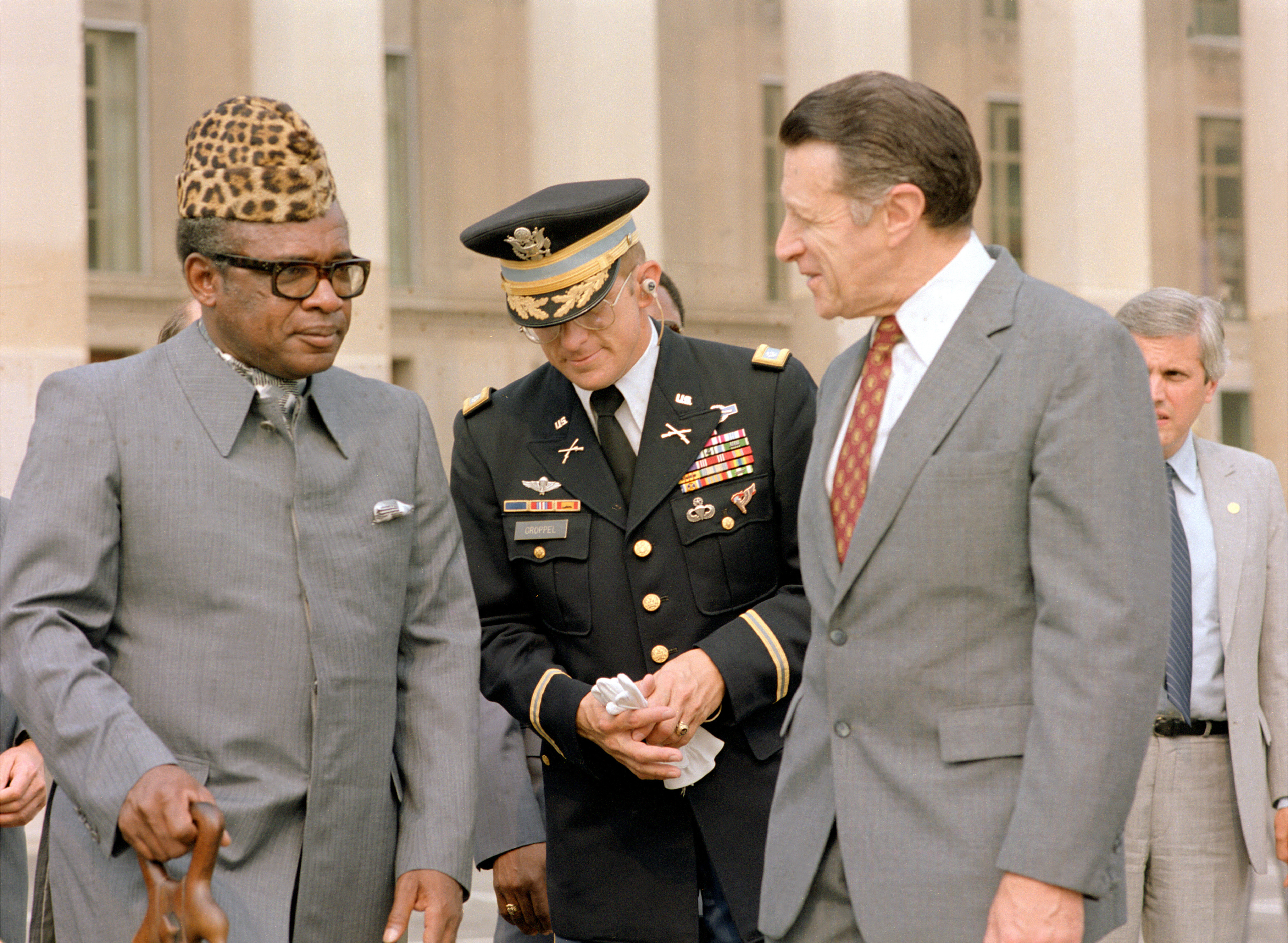Abacost on:
[Wikipedia]
[Google]
[Amazon]
 The abacost, a blending of the French ''"à bas le costume"'' (), was the distinctive clothing for men that was promoted by
The abacost, a blending of the French ''"à bas le costume"'' (), was the distinctive clothing for men that was promoted by ''Zaire: A Country Study'' POLITICAL REFORM IN THE 1990s - Proclamation of the Third Republic
/ref> Arzoni in Zellik, Belgium produced the world's "chicest" abacosts. Alfons Mertens, employed by Arzoni, became Mobutu's personal tailor, also making uniforms for him and his entourage. The abacost fell out of favour after Mobutu's removal from power.
Library of Congress; Glossary, Zaire
African clothing Clothing in politics African and Black nationalism in Africa Zaire
 The abacost, a blending of the French ''"à bas le costume"'' (), was the distinctive clothing for men that was promoted by
The abacost, a blending of the French ''"à bas le costume"'' (), was the distinctive clothing for men that was promoted by Mobutu Sese Seko
Mobutu Sese Seko Kuku Ngbendu Wa Za Banga (; born Joseph-Désiré Mobutu; 14 October 1930 – 7 September 1997) was a Congolese politician and military officer who was the president of Zaire from 1965 to 1997 (known as the Democratic Republic o ...
as part of his '' authenticité'' programme in Zaire
Zaire (, ), officially the Republic of Zaire (french: République du Zaïre, link=no, ), was a Congolese state from 1971 to 1997 in Central Africa that was previously and is now again known as the Democratic Republic of the Congo. Zaire was, ...
, between 1972 and 1990. Zairians were banned from wearing Western-style suits with shirt
A shirt is a cloth garment for the upper body (from the neck to the waist).
Originally an undergarment worn exclusively by men, it has become, in American English, a catch-all term for a broad variety of upper-body garments and undergarments. I ...
and tie to symbolise the break with their colonial past. The abacost was a lightweight suit, worn without a tie, though sometimes with a cravat Cravat, cravate or cravats may refer to:
* Cravat (early), forerunner neckband of the modern necktie
* Cravat, British name for what in American English is called an ascot tie
* Cravat bandage, a triangular bandage
* Cravat (horse) (1935–1954), a ...
. It closely resembled a Mao suit
The modern Chinese tunic suit is a style of male attire originally known in China as the Zhongshan suit () after the republican leader Sun Yat-sen (Sun Zhongshan). Sun Yat-sen introduced the style shortly after the founding of the Republic of ...
. It was seen in long-sleeved and short-sleeved versions.
The abacost was seen as the uniform of Mobutu's supporters, especially those who had benefited from his regime. When Mobutu announced a transition to multiparty democracy in 1990, he said that the Western suit and tie would be allowed, but that he continued to favor the abacost and it would still be considered the national dress. Subsequently, when the transitional government was sworn in, all of the ministers were wearing abacosts./ref> Arzoni in Zellik, Belgium produced the world's "chicest" abacosts. Alfons Mertens, employed by Arzoni, became Mobutu's personal tailor, also making uniforms for him and his entourage. The abacost fell out of favour after Mobutu's removal from power.
See also
*Kariba suit
A Kariba or Kareeba suit is a two-piece suit for men created by Jamaican designer Ivy Ralph, mother of Sheryl Lee Ralph, in the early 1970s to be worn on business and formal occasions as a Caribbean replacement for the European-style suit and ...
*Nehru jacket
The Nehru jacket is a hip-length tailored coat for men or women, with a mandarin collar, and with its front modelled on the Indian achkan or sherwani, a garment worn by Jawaharlal Nehru, the prime minister of India from 1947 to 1964.
History ...
*Madiba shirt
A Madiba shirt is a loose-fitting silk shirt, usually adorned in a bright and colourful print. It became known in the 1990s, when Nelson Mandela—then elected President of South Africa—added the item to his regular attire. Mandela popularised ...
References
{{ReflistExternal links
Library of Congress; Glossary, Zaire
African clothing Clothing in politics African and Black nationalism in Africa Zaire